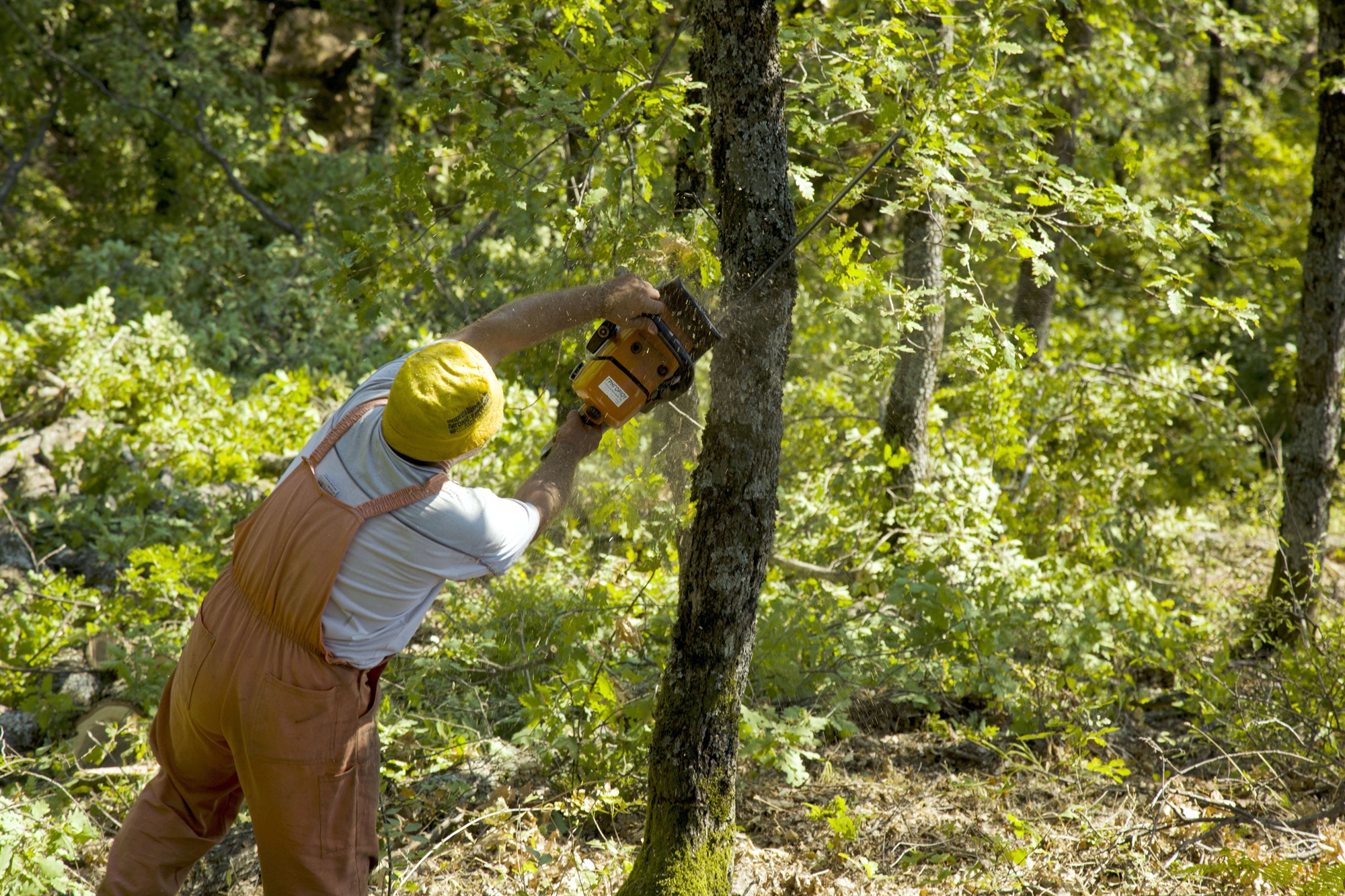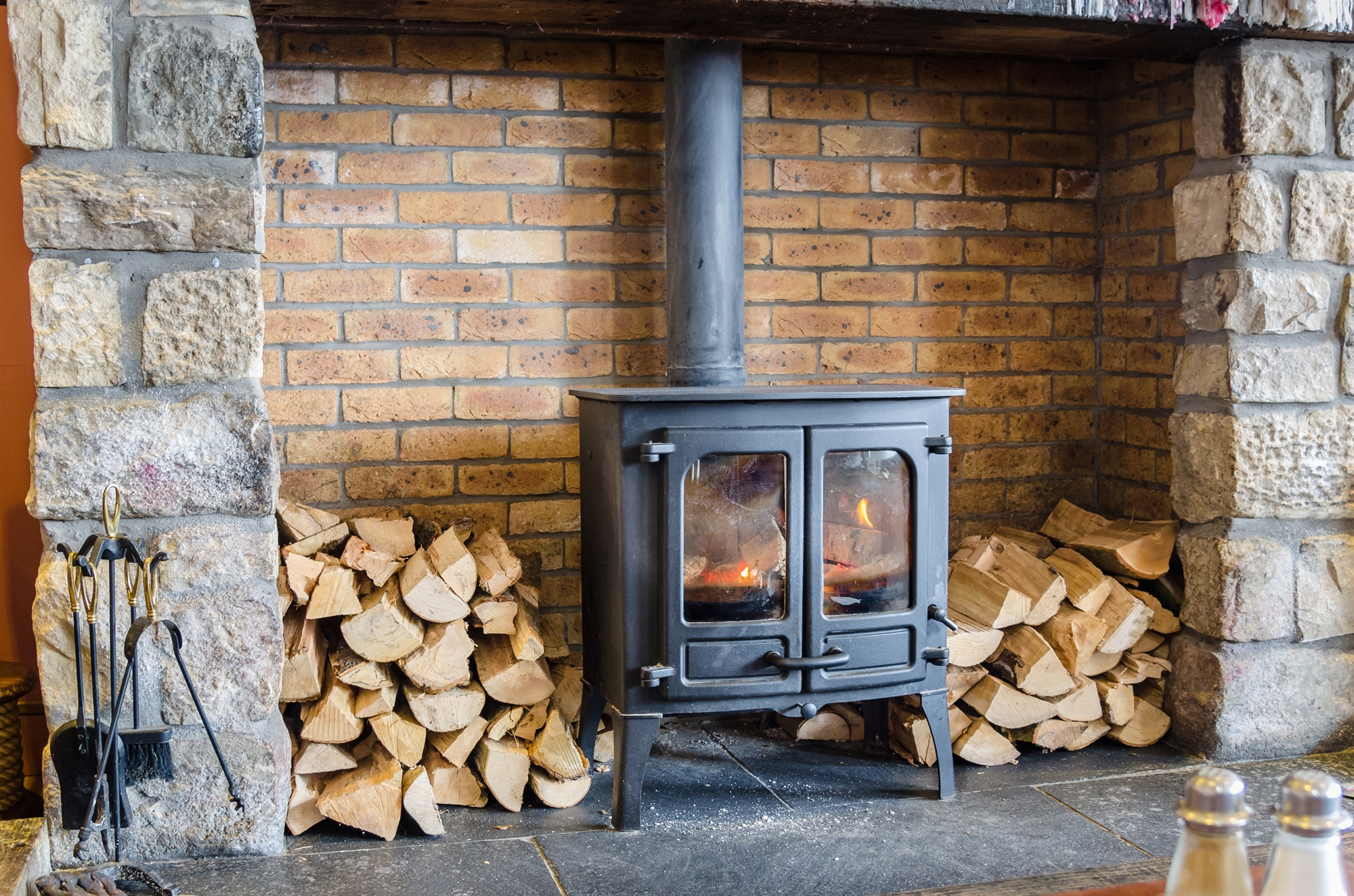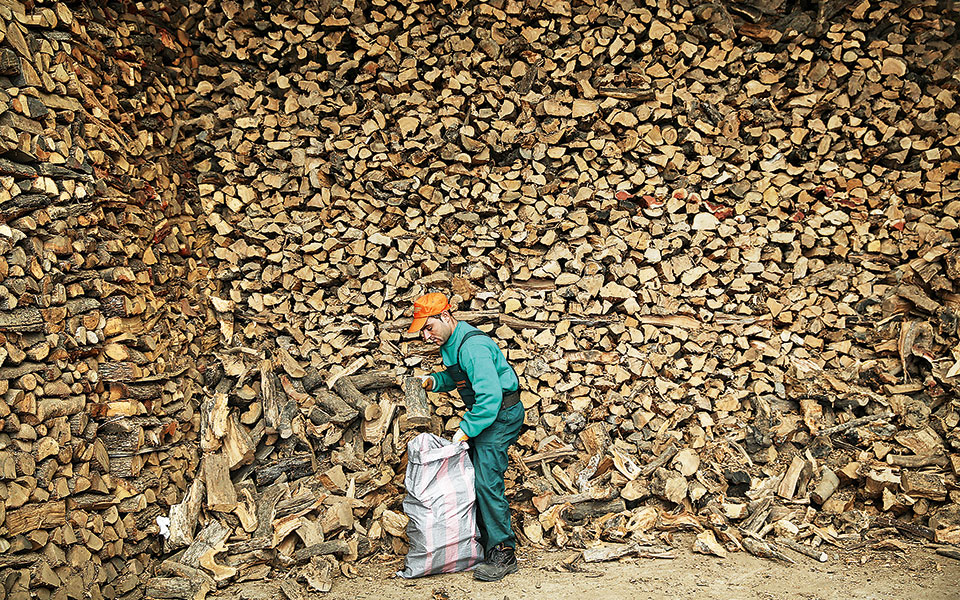
In the winter of 1974, during his first term as President of the French Republic, when the world oil crisis continued, Valéry Giscard d’Estaing refused to use any other coolant for the frozen Elysee Palace for firewood, even when official guests crossed its threshold. He wanted to set a good example for the townspeople.
This year, the French will not need such temptations. Through the new international energy crisismany have taken care since the beginning of the summer to fill up wood or pellets their warehouses. Those who didn’t foresee suffer the consequences: prices have reached unimaginable heights and stocks are almost depleted. Suppliers warn they can’t keep up with demand. And all this in a country where about 9 million households are heated by wood (estimated to exceed 12 million by 2028).
The situation is similar in most European countries. With the growth of purchase costs reaching 100% (in Poland, Bulgaria, Slovakia and other countries), firewood becomes the new gold. They are no longer an additional heating method next to the classic ones. oil, gas, electricity– but sir. That’s just what burns in fireplaces and stoves is not always firewood. On the outskirts of Warsaw, since the end of September, when it got noticeably colder, the atmosphere is suffocating. Many Poles, unable to buy firewood, throw anything into the fire, even rubbish. This is confirmed by the city hall, reporting a significant decrease in the amount of collected waste in recent weeks.

Toxic microparticles
“Wood burning remains a major source of particulate matter worldwide and is an issue we should all be concerned about, especially this winter, as it is causing massive damage to ecosystems, public health and climate change.” says Athanasios Nenes “K”., professor at the Polytechnic Institute of Lausanne and a leading international scientist on climate change and air pollution. “Smoke remains in the air for many days after it has been emitted, thus affecting large areas. This is bad for our health. Smoke particles have a high content of carcinogenic compounds – in the case of Athens, we found that fireplaces are responsible for approximately 50% of the population’s annual exposure to carcinogenic compounds. What most citizens don’t know is that the levels of pollution from wildfires and burning wood in fireplaces are almost the same. What they experienced in the Varibombi fire, in 2021, with a cloud of thick smoke covering the capital, they systematically experience in the winter, without themselves realizing it. In fact, when the smoke is emitted in areas like Attica, which also have nitrogen oxide emissions, as well as a lot of ozone, it oxidizes faster (overnight) and becomes more dangerous. On many winter mornings, Athenians on their way to work inhale poisonous particles from fireplaces that burned during the night. All this is associated with a wide range of diseases,” continues Mr. Nenes.
In the case of Athens, we found that fireplaces account for approximately 50% of the population’s annual exposure to carcinogenic compounds.
The dangers to which we are exposed by inhaling such smoke confirm Evangelos Balis, pulmonologist-resuscitator, head of the pulmonology clinic at Evangelismos Hospital. “Biomass burning causes serious health problems, from asthma exacerbations and chronic respiratory lung diseases to premature aging, cardiovascular disease and lung cancer. And this is because the smallest suspended particles are emitted into the atmosphere – 1, 2.5, 10 microns in diameter or even nanoparticles that cannot be filtered through the nose or upper respiratory tract, i.e. go beyond the filters of sneezing and coughing, and are often deposited in the alveoli of the lungs. In addition, particles from incomplete combustion are more toxic than those from complete combustion,” he notes.
“Think about the explosive mixture that will exist in the atmosphere of our cities and villages, when, apparently for economic reasons, our fellow citizens will start throwing painted wood, melamine, plywood, novopan or objects impregnated with chemicals into their fireplaces and stoves” . Are there ways to protect yourself? “It would be ideal to use less polluting sources of heating, but if this is not possible, at least we should take care, in addition to the quality of the fuel, to clean the fireplaces, properly maintain the burners, etc.,” says Mr. Balis. “And, of course, depending on weather conditions, wearing a mask outdoors is appropriate to protect both vulnerable groups and the general population.”

In addition to the impact on public health, smoke particles have a significant impact on climate as well as ecosystems. “They can act as ‘cores’ on which cloud drops and ice crystals form, changing the properties of clouds (how dense they are, how long they live, and when they cause rain) on a global scale. The particles themselves have the ability to reflect solar radiation back into space, making the climate cooler. When wood does not burn completely, “smoke” (black and brown carbon) is produced, which in turn can absorb light and warm the climate. Transferring and depositing this “smoke” to the poles and glaciers, they additionally heat up and accelerate the melting of ice – with all the ensuing consequences for the planet,” explains Athanasios Nenes.
Black winter for forests
So the first prisoner is the pollution of the atmosphere, hence the consequences for our health. Secondly, the impact on the climate. The third parameter of what we will face in the coming months is uncontrolled logging, which has already reached dangerous levels. Environmental organizations are predicting a dark winter for Europe’s remaining forests. Their concern is far from unfounded. In Albania, where the government has not announced any initiative to support poor households that depend solely on firewood, the municipality of Korçë has given permission to clear hundreds of additional acres of land. But again, the needs are huge and likely to be met illegally. After all, Albania is losing about 20,000 hectares of forest land every year. Accordingly, a piece of forest the size of half a football field is lost every day in Kosovo. And Greece, unfortunately, is no exception to the chainsaw madness. It is typical that the president of the municipality of Nevrokopio said in a telecast at the beginning of the week: “We have the largest forest area in Greece and we have no firewood. If this situation continues, the whole world will go into the forests to cut wood, because this is a matter of survival, not luxury.”
Swiss Andrea Bonetti is a biologist and photographer (personal photographer of Alexis Tsipras from 2014 to 2019). Permanently based in Greece since 2011, he studies air pollution and informs the public about the measurements he makes with special sensors in various regions of the country through a platform. www.cleanairinggreece.org. “Greece ranked 36th among the most polluted countries in the world in 2019 and first in the European Union in the concentration of hazardous PM2.5 particles – twice the safety limit set by the World Health Organization,” he emphasizes. “As soon as the wood stoves and fireplaces are lit, what I call Airmageddon will start for the atmosphere. There is only one way out: subsidies to citizens for heat pumps, solar panels and home insulation. Fossil fuels and wood burning are a thing of the past. Let’s finally turn the page and turn to sustainable development. Margin ends…
A catastrophic solution to the energy problem is the transition to wood.
The war in Ukraine, sanctions against Russia and the resulting energy crisis have turned Europeans into firewood to warm their homes in the winter.
Increased demand led to a sharp increase in prices for it, especially after the ban on the import of Russian wood and pellets into the EU, which hit the poorest households. Firewood merchants have made waiting lists for next year after selling their stocks this year. At the same time, scientists and activists are voicing strong concerns about the environmental devastation that will follow from air pollution from wood burning, especially indoors, and massive deforestation, exacerbating the already severe effects of climate change.

Many scientific studies have shown that burning wood and pellets causes more air pollution than burning coal. A study published by the European Public Health Alliance says that air pollution from the burning of fossil fuels and wood for heating costs 27 billion euros to cover their harmful health effects in the EU. and UK. 17 billion euros is accounted for by burning wood. What’s more, the UK government estimates that burning wood contributes to 38% particulate air pollution.
What is true in Europe?
To deal with the energy crisis, European governments have relaxed logging regulations while at the same time encouraging people to switch to wood. As Katalin Rodic, an activist with Greenpeace Hungary, explains, destroying protected forests to ensure energy security is a “crazy and completely destructive” decision, especially at a time when the Hungarian forests are already being destroyed by extreme summer temperatures. In addition, other environmental organizations are sounding the alarm that logging and monoculture are endangering Europe’s biodiversity and at the same time making it unattainable to achieve environmental goals. Deforestation is expected to be a particular problem in Central and Eastern Europe. In Slovakia, for example. illegal logging is already on the rise, and Hungary has abolished all forest protection regulations. In Poland, citizens are already taking to the streets to chop wood. Latvia allowed the felling of young trees, Lithuania asked the relevant ministry to increase the number of trees that can be cut down. Of the Baltics, only the Estonian government refuses to raise the rate of permitted logging.
Source: Kathimerini
James Springer is a renowned author and opinion writer, known for his bold and thought-provoking articles on a wide range of topics. He currently works as a writer at 247 news reel, where he uses his unique voice and sharp wit to offer fresh perspectives on current events. His articles are widely read and shared and has earned him a reputation as a talented and insightful writer.